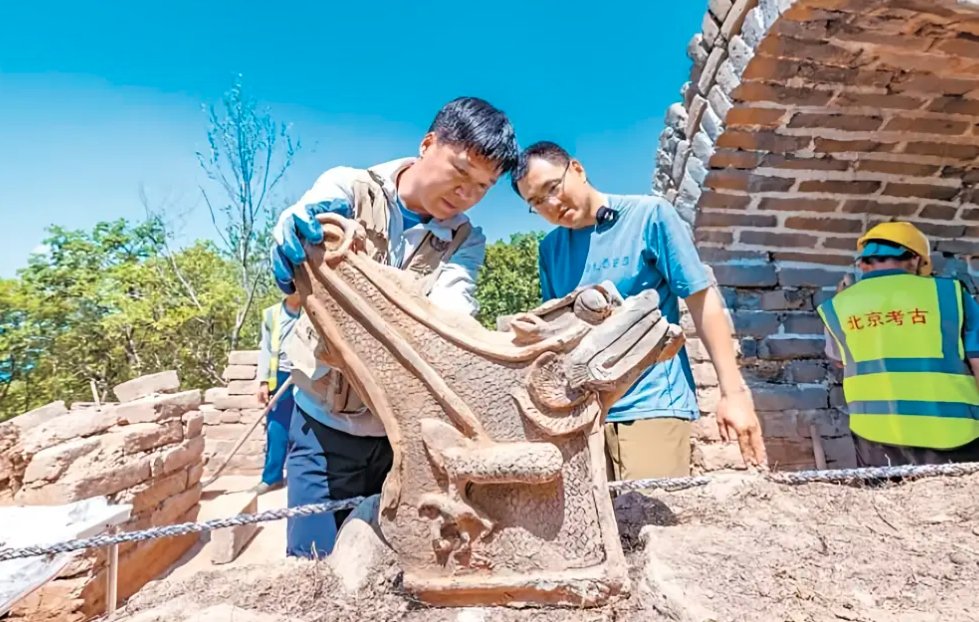Amidst the rugged terrains of the Jiankou section of the Great Wall of China, a remarkable discovery has emerged from the ruins of a Ming Dynasty guard tower. Archaeologists have unearthed a detailed dragon sculpture, a symbol of imperial power and cultural significance, offering a rare insight into the architectural grandeur of ancient China.
Unveiling the Mythical Guardian
The excavation, led by the Beijing Institute of Archaeology, revealed the dragon sculpture beneath the rubble of a collapsed watchtower. This “kissing beast,” as it was known, served as a decorative ornament, likely gracing the roof of the watchtower and overseeing the vast landscapes of the empire.
The dragon’s intricate design, with delicate scales and a finely carved visage, speaks volumes of the craftsmanship and artistic prowess of the Ming era. It stands as a testament to the elaborate architectural details that once adorned the Great Wall’s defensive structures.

Artifacts of War and Daily Life
Alongside the dragon, the archaeologists discovered a folangji, a European cannon, marking the first such find in this section of the Great Wall. This small but significant weapon sheds light on the military exchanges between the East and West during the Ming Dynasty.
Personal items of the soldiers who manned the watchtower were also found, including tools, door rings, spoons, and shovels. These artifacts paint a vivid picture of the daily lives of those tasked with the defense of an empire.
The Tower’s Tale: A Story of Rank and Ritual
The watchtower’s location and the opulence of its adornments suggest it was manned by officers of higher rank. The presence of the dragon sculpture, in particular, indicates a status of considerable importance within the military hierarchy of the time.
As the restoration and study of the Jiankou section continue, each artifact brings us closer to understanding the complexities of life on the Great Wall. The dragon sculpture, in particular, serves as a bridge connecting the present to the mysteries of the past.













